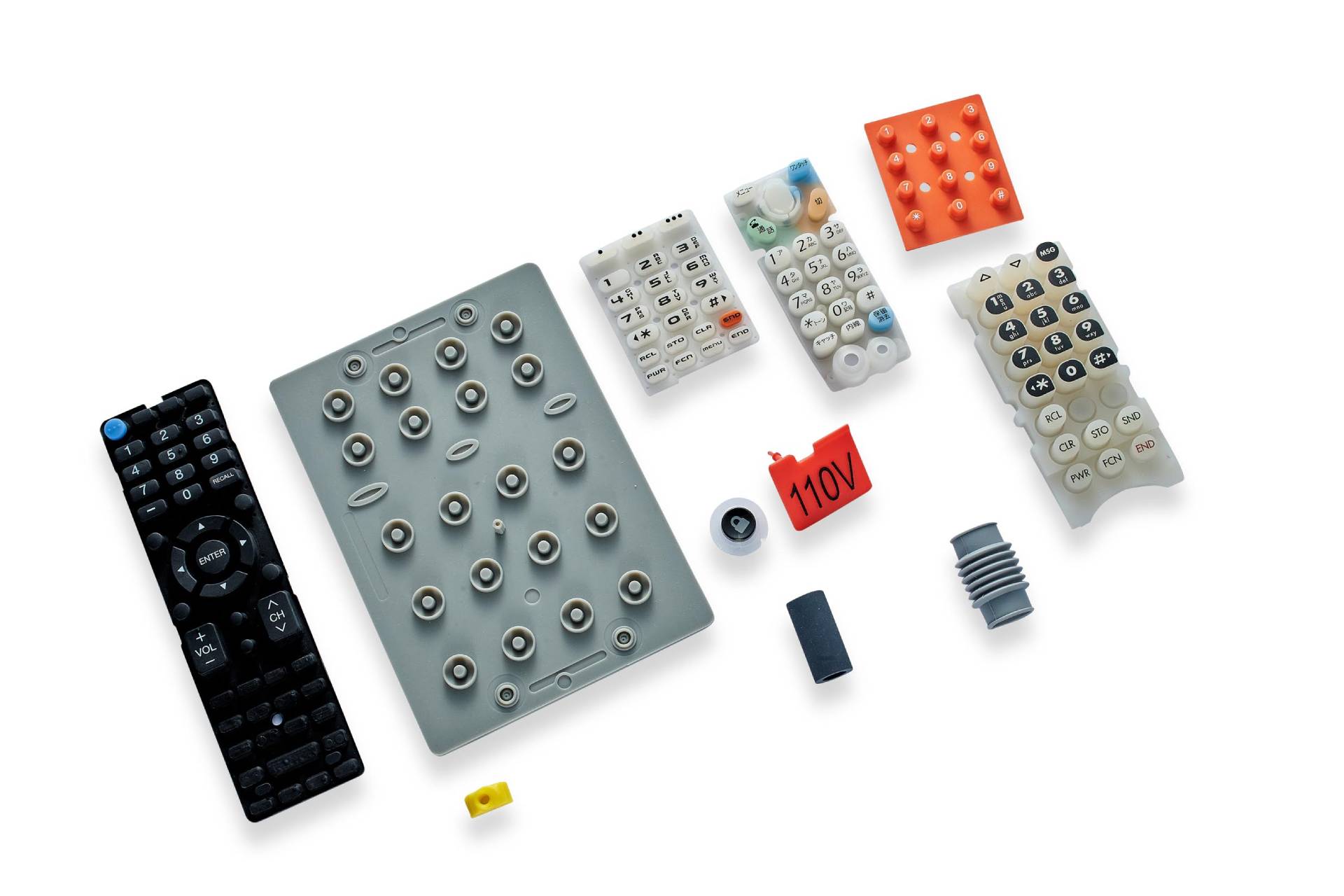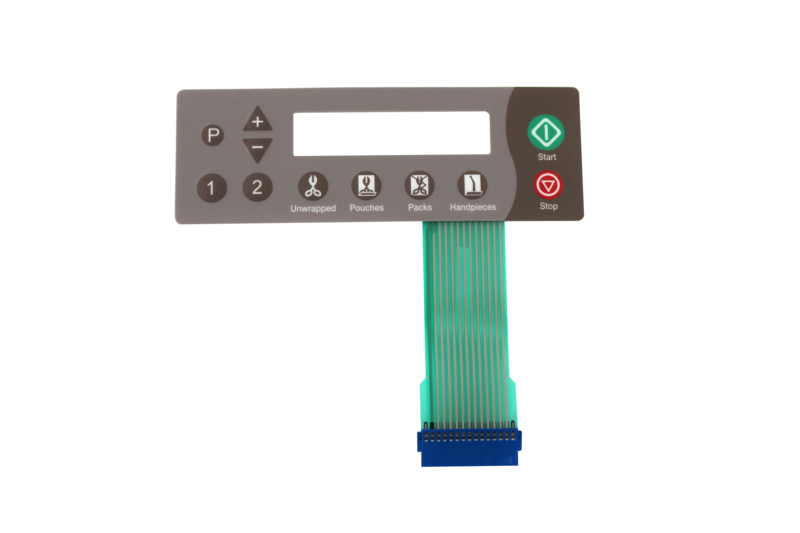Membrane Switch Manufacturer Focused on User-Centered Design
Just How Membrane Switch Innovation Functions and Its Role in Customer Interface Style
Membrane switch modern technology is a sophisticated approach that integrates split products for touch-sensitive input. When pushed, its layout consists of visuals overlays, conductive layers, and adhesive elements that connect. This interaction not only completes an electric circuit yet also affects the general customer experience. Understanding the complexities of this innovation discloses its significant effect on individual interface layout, provoking concerns concerning its applications and future growths in numerous sectors.
Recognizing Membrane Switch Technology
Membrane button technology serves as a critical element in contemporary user interface layout. This modern technology incorporates visuals overlays, touch-sensitive membrane layers, and circuit layers to create a compact, dependable input technique for various gadgets. The style normally contains several layers, including a printed graphic layer that allows customers to connect with the gadget with tactile feedback. Membrane buttons are known for their resilience, resistance to moisture, and simplicity of cleaning, making them suitable for settings where standard mechanical switches may fall short. Their inconspicuous style enables smooth integration right into tools, contributing to a smooth appearance. Furthermore, Membrane switches can be customized with various shades, structures, and icons, boosting individual experience and visual charm. This adaptability makes them popular in customer electronics, clinical gadgets, and industrial controls, where intuitive communication is necessary. In general, Membrane switch innovation represents a substantial improvement in how customers engage with digital interfaces.
Trick Components of Membrane Changes
Membrane switches over include a number of vital elements that add to their performance and style. The conductive layer products, sticky and assistance layers, and graphic overlay style each play an essential role in making certain optimal efficiency and user interaction. Understanding these components is vital for reliable user interface design.
Conductive Layer Materials
Conductive layer products play an essential function in the performance and integrity of Membrane switches. When stress is used to the button, these products are liable for completing electrical circuits. Normally, a mix of conductive inks, such as silver or carbon, is made use of to develop these layers. Silver conductive ink is preferred for its remarkable conductivity and longevity, while carbon ink is often used for cost-effective applications. The choice of material impacts not only the electrical efficiency but also the overall life-span of the button. In addition, the density and make-up of conductive layers can affect tactile feedback and switch actuation. Selecting the suitable conductive material is vital for ensuring optimal performance in diverse user interface applications.
Adhesive and Support Layers
Adhesive and assistance layers are crucial parts that add to the structural honesty and capability of Membrane buttons. These layers supply a durable foundation, ensuring that the numerous elements of the Membrane button remain firmly bound and correctly aligned throughout their functional life. The adhesive layer facilitates the add-on of the button to the underlying surface, supplying longevity against ecological aspects such as moisture, temperature level variations, and mechanical tension. Support layers boost the switch's strength, preventing contortion during usage and adding to a consistent responsive feedback. Together, these parts play an important duty in maintaining the efficiency and longevity of Membrane switches, inevitably affecting the overall customer experience in interface design.
Graphic Overlay Style
Although often ignored, visuals overlay design plays a necessary duty in the functionality and looks of Membrane switches. This layout primarily works as the interface between the user and the electronics, offering both visual charm and operational clearness. Efficient visuals overlays make use of shade, typography, and symbols to lead customers in steering controls and understanding tool features. In addition, the choice of products influences longevity and responsive responses, making certain the overlay holds up against wear while keeping a pleasurable customer experience. Additionally, accurate placement of the overlay with the underlying elements is important for optimal efficiency. To conclude, thoughtful graphic overlay layout enhances usability, adds to brand name identity, and ultimately affects individual contentment in gadgets utilizing Membrane button modern technology.
The Production Process of Membrane Changes
The manufacturing procedure of Membrane switches entails several essential actions that guarantee performance and sturdiness. Initially, a graphic overlay is designed, incorporating customer interface components and branding. This overlay is printed onto a flexible substratum, typically polyester or polycarbonate, using precision printing strategies to determine quality and shade accuracy.Next, sticky layers are applied, followed by the assimilation of conductive traces, usually made from silver or carbon, which are essential for electric connection. These traces are etched or screen-printed onto a different layer. After this, a spacer layer is contributed to create the required void in between the overlay and the circuit layer, permitting responsive responses when activated.Finally, the elements are set up and evaluated for quality guarantee, ensuring that each Membrane button meets the called for specs for performance and dependability. This careful procedure causes a durable item matched for different applications in interface layout.
Benefits of Utilizing Membrane Switches Over

Membrane changes offer many advantages that make them a preferred selection in interface style. One significant advantage is their portable and lightweight nature, enabling streamlined designs in numerous applications. Furthermore, Membrane buttons supply a sealed user interface, securing against dirt, wetness, and pollutants, which enhances longevity and reliability. They are also very customizable, making it possible for developers to create one-of-a-kind graphics and designs tailored to certain user needs.Another benefit is their cost-effectiveness, as they commonly need much less material and labor contrasted to standard buttons. The responsive responses of Membrane buttons can be crafted to improve customer experience, providing a satisfying action without the mass of mechanical elements. In addition, Membrane switches can be conveniently integrated into diverse environments, such as clinical tools, industrial devices, and customer electronics. In general, these benefits emphasize the growing appeal of Membrane buttons in modern interface layout.
Applications in Various Industries
Commonly used throughout numerous industries, Membrane switch innovation has actually located its place in applications ranging from medical gadgets to consumer electronics. In the medical care sector, these switches are integral to devices such as diagnostic devices and individual surveillance systems, supplying sturdy, easy-to-clean user interfaces that endure sterilization processes. The automobile industry employs Membrane switches in dashboards and control board, giving reliable procedure in tough environments.Consumer electronic devices, including home appliances and gaming consoles, benefit from the smooth design and customizability of Membrane switches, improving user interaction. In addition, commercial machinery uses these read review buttons for control panels, making certain resistance to dirt and moisture while preserving functionality.Moreover, the aerospace and armed forces markets use Membrane buttons for tough applications, where integrity and efficiency are vital. On the whole, Membrane button innovation serves diverse markets by incorporating capability, longevity, and aesthetic allure, making it a flexible choice for modern-day interface.

Creating Customer User Interfaces With Membrane Switches Over
When creating interface with Membrane switches, cautious consideration of both capability and looks is vital. Membrane changes supply a smooth, inconspicuous style that can enhance aesthetic charm while keeping functionality. Developers should concentrate on switch format, guaranteeing instinctive placement for ease of operation. The tactile feedback supplied by the Membrane switch is vital; it can affect individual complete satisfaction and overall experience.Additionally, shade and visuals components ought to line up with the brand name identification, reinforcing recognition and experience. Choosing durable materials that hold up against deterioration is likewise crucial, as durability contributes to functionality in time. Integrating backlighting can boost presence in numerous lights problems, even more boosting user interaction. Eventually, a properly designed Membrane button user interface balances both kind and function, making sure that the customer experience is both efficient and interesting, satisfying the demands of varied applications across sectors.
Future Patterns in Membrane Switch Technology
As Membrane button technology evolves, the integration of smart performances is coming to be significantly famous. These developments allow improved interactivity and connection within interface (membrane switch manufacturer). In addition, the shift towards environmentally friendly materials mirrors a growing dedication to sustainability in design methods
Smart Membrane Changes

Eco-Friendly Products Use
Amidst the advancements in Membrane button innovation, a considerable pattern is emerging towards using green materials. Suppliers are increasingly prioritizing sustainability by integrating non-toxic inks and biodegradable plastics, decreasing ecological impact. This change not just aligns with international environmental criteria yet additionally addresses customer need for greener items. Technologies in product scientific research have actually enabled the growth of long lasting, eco-friendly alternatives that maintain efficiency without compromising top quality. These products use comparable functionality to standard options while reducing waste and toxicity. As sectors become more eco-conscious, the integration of sustainable methods in Membrane switch manufacturing is expected to increase, reinforcing a dedication to ecological responsibility and leading the means for more sustainable interface services in the future.
Frequently Asked Inquiries
Exactly How Do Membrane Changes Differ From Typical Mechanical Switches?
Membrane changes vary from conventional mechanical buttons mainly in building and construction and operation. They use flexible layers that produce a secured interface, whereas mechanical switches depend on physical movement and get in touch with, causing distinct longevity and tactile comments features.
Can Membrane Changes Be Personalized for Details Applications?
Membrane switches can undoubtedly be customized for certain applications - membrane switch manufacturer. Manufacturers develop her comment is here them to satisfy one-of-a-kind requirements, permitting for customized formats, graphics, and functionalities that improve individual interaction and fit certain functional demands effectively
What Is the Life expectancy of a Membrane Switch?
The lifespan of a membrane switch normally varies from 1 to 5 million actuations, relying on variables such as worldly quality, ecological problems, and use regularity. Normal screening can aid establish its long life and integrity in applications.
Are Membrane Changes Water Resistant or Immune to Chemicals?
Membrane buttons can be created to be water resistant and immune to chemicals, depending on the products made use of and manufacturing processes. Correct securing and safety finishes improve their toughness in numerous environmental conditions and applications.
Just How Do Membrane Changes Impact Device Power Usage?
Membrane buttons can substantially affect device power usage by guaranteeing efficient procedure. Their low power requirements during activation aid reduce energy use, contributing to longer battery life and total enhanced effectiveness in digital gadgets. Membrane switches are important site known for their longevity, resistance to wetness, and ease of cleansing, making them suitable for settings where conventional mechanical buttons may fail. The vehicle industry utilizes Membrane switches in dashboards and control panels, supplying trusted operation in challenging environments.Consumer electronics, consisting of home appliances and gaming consoles, benefit from the streamlined style and customizability of Membrane switches, enhancing individual communication. Furthermore, commercial machinery utilizes these buttons for control panels, ensuring resistance to dust and wetness while keeping functionality.Moreover, the aerospace and military fields use Membrane buttons for rugged applications, where integrity and performance are essential. The development of Membrane button technology is going into an interesting stage with the appearance of smart Membrane buttons, which incorporate innovative features and functionalities. Membrane switches differ from standard mechanical buttons primarily in construction and operation.